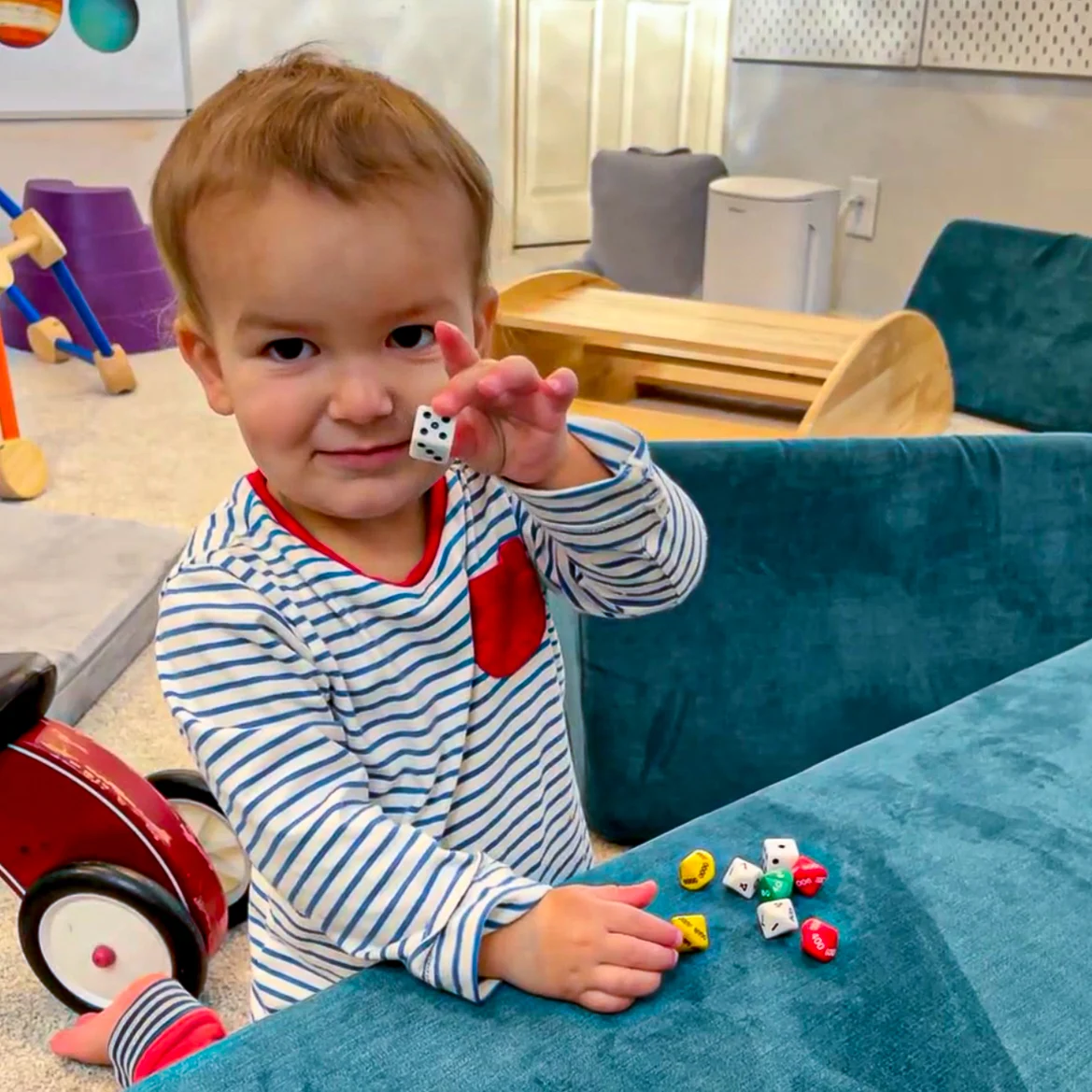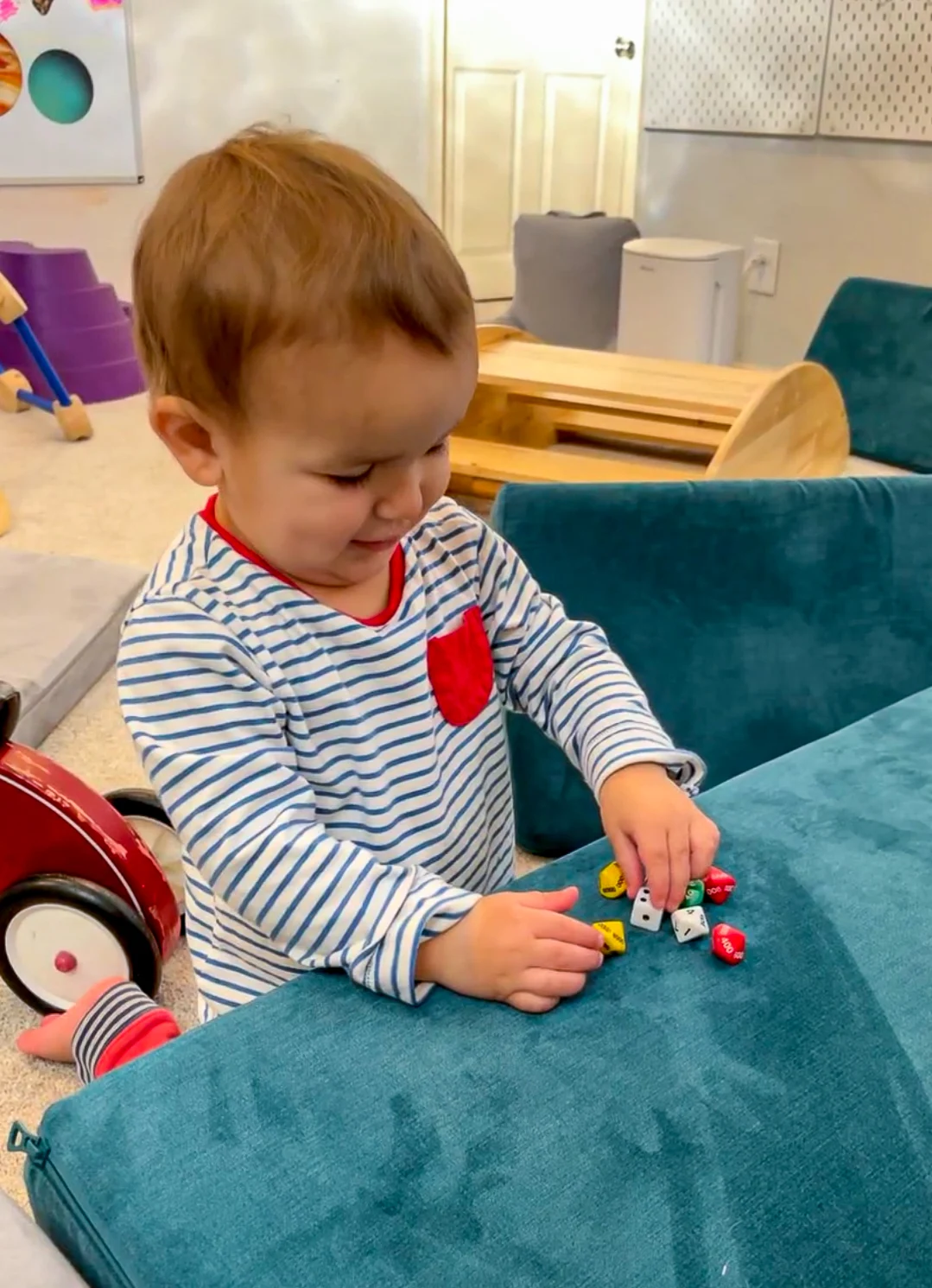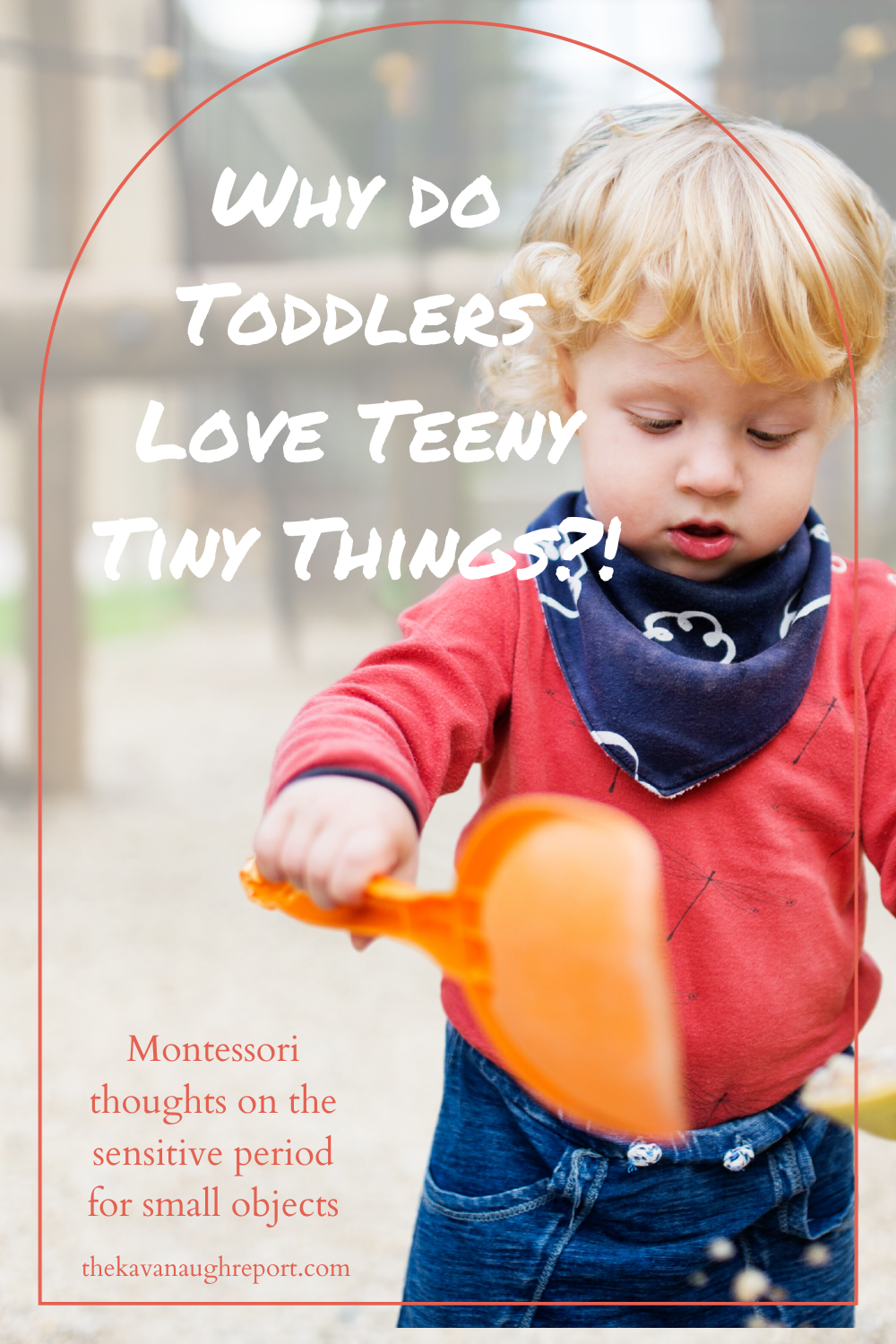One of Teddy's favorite things in the whole world right now is dice. Not any particular dice, just dice in general. Any game we want to play that has them, he is right there, wanting to try to roll the dice and carry them around. And, while dice are his favorite, they aren't the only little items that he loves to find. Lego, marbles, small pieces of lint, tiny scraps of paper, and any little material are all popular. And, having three older siblings, there is plenty of little thing opportunities around. Welcome to the sensitive period for small objects!
So, what is the deal with toddlers and little objects? How do we allow for exploration but still keep them safe? And, is it a problem to let toddlers play with small objects?
Montessori Sensitive Period for Small Objects and Toddlers
At around 18-months, toddlers enter the sensitive period for small objects which will last until around 3/4-years-old. During this time, they develop an intense love of tiny things. This sensitive period is actually a really important stage. It allows toddlers to take pleasure in exercising very fine motor movements. This practice is extremely important in developing the hand-eye coordination they need for life. But in the more immediate sense, this hand-eye coordination will allow them to take full advantage of their upcoming sensitive periods of writing and reading as preschoolers.
This sensitive period also allows them to further explore their world in new and different ways. They are able to notice and appreciate very small details that go missed by our adult brains and eyes. It allows them to classify information and take in sensorial impressions that we just don't recognize as super important.
In other words, playing with tiny things, finding tiny details, noticing bits of tiny garbage are all an important and necessary part of being a toddler.
Opening Up Opportunities
As Montessori parents, we have to recognize this reality. We have to open up opportunities for toddlers to explore items that might feel unsafe or unimportant to us. If you have older kids, these opportunities are likely easier to come by. A toddler might get into the lego stash or find other little toys around. It might be like Teddy where they latch onto a tiny part of a game, or go looking for things that fall on the floor.
If you don't have older kids (or even if you do), it might be that your child is interested in lint on the floor, tiny rocks in the park, a tiny little part of a picture in their favorite book, or a tiny knob on another object.
It might be natural items, every day items, toys, fabric. But, whatever it is, we have to make space in our parenting to recognize this as valid and important work. It might mean that we consider adding materials with smaller parts for them on their shelves, or it might mean we let them explore those objects they find.
Keeping Them Safe
Once we recognize that it's important work for toddlers to play with tiny objects, how do we keep them safe while allowing it? Obviously the first fear that comes to mind is chocking. We think that toddlers will automatically stick all the tiny things in their mouths. But, is this a real fear or one we have been conditioned to believe? Like many things as a Montessori parent, it depends. Here are a few things I like to keep in mind when considering safety:
- How much is my child mouthing? Are they able to explore even for a few minutes without putting something into their mouth? Will they listen to a reminder or redirection to keep items in their hands?
- Am I able to observe them in this moment? Can I gently block any attempts as unsafe exploration? Is this an opportunity that I can easily repeat at another time? Is my own fear real based on what I have seen from my child or just perceived?
If it's really not safe, we can redirect to a safer activity or sit very close to supervise and make sure the exploration remains safe. With older kid materials, I try to make sure they are stored in areas that are unaccessible to Teddy. If that isn't possible, then I store the tiny materials in containers that a toddler can't open - mason jars with lids, a lock box, or zippered closed bags are all easy to find options.
For some work, I keep the tiny pieces and the kids know to ask for them. For example, with our marble tree I keep the marbles in a small bag in an adult area. Even Teddy can take down the tree and then needs to ask for the marbles. This way I know he is using them (perfectly appropriate for him) but it alerts me to keep an eye on the situation.
Keep it Calm
Finally, try to remain calm if your toddler finds or explores tiny objects. It's normal, it's important, and often it's safe. If we stumble on a toddler that's found something, observe before reacting. Respond with curiosity, respect and grace. There's no reason to make these coveted objects or forbidden things. Give some trust, stay alert, and remain calm.
Does your toddler love tiny things? How do you balance older kid materials and toddlers?





